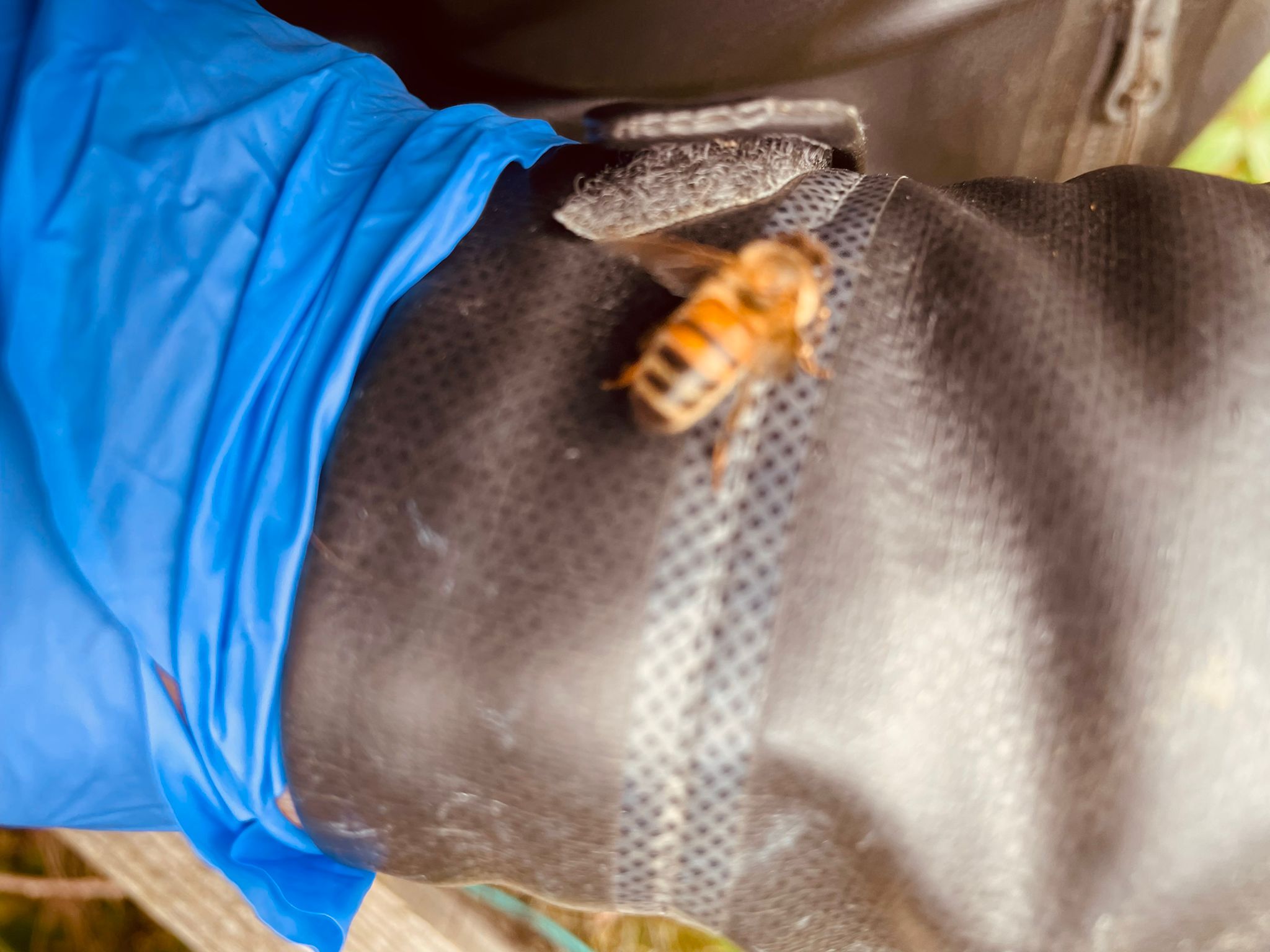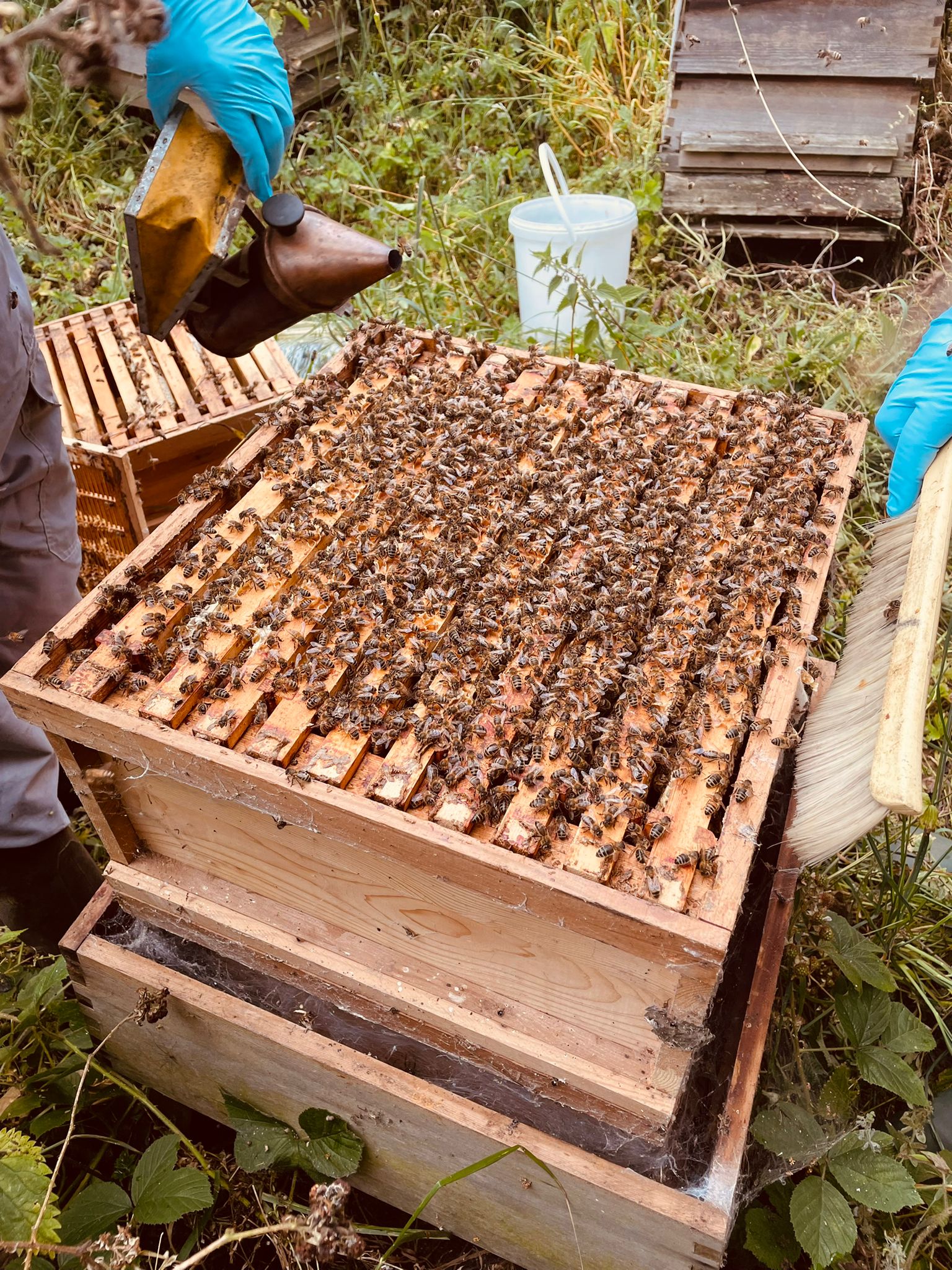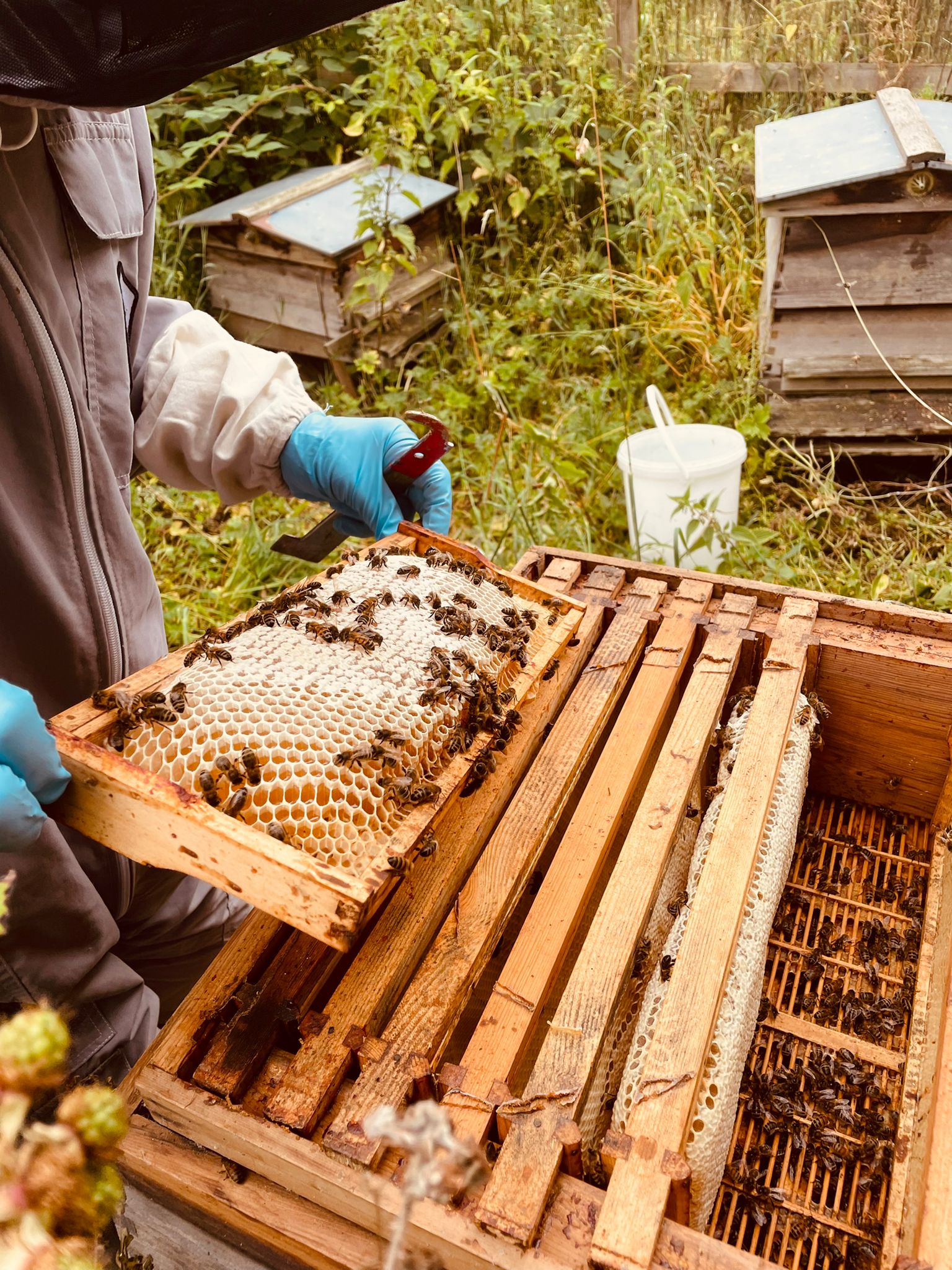Monthly Conservation Group Meetings
A committed group look after the various aspects of the churchyard throughout the year but all are welcome to join in one event or more as they are able or indeed to come at any time to help with the list of jobs that are pinned up in the porch for the month ahead.
General conservation meetings now take place on the 2nd Saturday of the month between March and December. Please come ready for working outdoors [tools will be supplied or you can bring your own]. Join us from 10am and enjoy a freshly made scone or two and hot drinks as we care and work together for an hour or two to help keep up the environmental work in this churchyard. All are welcome to help whether coming regularly or just the once!
March is usually our opening meeting of the season where we assessed what needs to be done immediately following the winter period and what can wait until later in the season. Monthly tasks are then monitored from this spring start and will include checking trees, gravestones and the 'moat' for any clearing and cleaning works.
April sees the start of any minor trimming works whilst minding that some birds may still be nesting. an opportunity too for any clinging moss to be tackled around the footings of the church.
May continues the works as the previous months above;
June meeting - usually one for taking further stock of works done and works to complete over the summer. This will include selected scything for areas identified and also maintaining the pathways to access all graves during the main grass growing season.
July - annual recording of the condition of the gravestones and further recording measures.
August - an opportunity to take stock and enjoy the results so far whilst tending to any tasks that are required.
September - early fruit collecting and general ‘green gym’ works including usually some last efforts to remove the moss and ivy from the 'moat' walls.
October - foraging for fruit and cones/dried sticks for future use with the children's Forest Church group and/or the Christmas season.
November - mainly a planning meeting but further dead wood removal, trimming and path edging for last time during the year. Cone and stick collections usually take place.
December - Decorate the church with outdoor materials and encourage others to take away some foliage to decorate their own homes for Advent/Christmas.
Bats
Bat counts usually take place on the first Weds of the month between April and October. Wrap up warmly and meet on the church path at dusk. There is no charge for these events but donations for the work of St Andrew’s are welcomed.
Bats are occasionally found on the floor during July and August and these are usually the result of an unsuccessful fledging. Young bats are sometimes helped successfully back to their maternity roost if we are able to get to them in time before dehydration sets in. So please do let us know if you see any bats on the church floors - they are not meant to be there so please let us know straight away.
In November 2024 with the help of funding from the YDNPA's Sustainable Development Fund [see further details below or website here: https://www.yorkshiredales.org.uk/sdf we were very excited to be able to purchase a passive Batlogger detector which is now in place in church to record the winter activity within the church itself.

We were also able to purchase 2 further hand held detectors for the use of whoever turns up on our bat watch evenings this coming year. We may position the passive detector around the churchyard to collect data over a period of time next year but for 2025 we will be concentrating on readings collected inside St Andrew's . Please let us know if you would like to support us in this work. This could be a project of its own to collate the rather more detiled recordings that we envisage will result from the positioning of a year round bat detector!
Visual checks on bat droppings are recorded over the winter seasons to help build a picture of all the bat activity at St Andrew’s. DNA tests carried out in 2021 have proved that the Soprano Pipistrelle and Pipistrelles are our regular 'congregation' in church but we occasionally pick up other species flying around outside church - which is also good to register.
Bees



We are delighted that our hive not only survived the winter period but thrived. A check from experienced beekeeper Neil along with two of our new volunteers looking on reported that it was "a healthy hive with a good colony size, no sign of disease or mites and a good stock of honey." We are very grateful to Neil for his help in opening up the hive and confirming that all is well and good.
We are in the happy position of now having a group of four volunteers interested in learning the ropes and they are currently learning from more experienced bee keepers and groups so that they can cope with the checking and monitoring required - particularly during the summer season - so that this isn't an onerous responsibilty for one person. If you are interested in joining the group, then please do get in touch using the contact button on this website.
On good years when we are able to extract the Honey, we are able to sell this both in church and in the village pub for the work of the conservation group. In previous years when we had two active hives, we had a situation when one hive resorted to robbing the other hive, early in the season, to save the bother of foraging. Recommended measures were put in place to stop this, including covering with a damp sheet and stuffing the entrance with dry grass. (Apparently the bees in the hive quickly learn to circumvent these barriers but it confuses the intruders.)
In November 2024, we were able with the help of YDNPA's Sustainable Development Funding [see Trees section below for further details of the funding awarded] to renew the stone building known as the 'Bee Shed' to have a renewed slate roof and renewal of the degraded oak beam structure. Now that the structure has been made sound, we can once again keep bee equipment and other conservation tools in a dry space in the churchyard location next to the bee hives. The SDF funding has also allowed us to order new bee suits for the 2025 season so do get in touch if you would like to join the fledgling group of volunteers who are hoping to gain further knowledge to help us look after the bees - could there be a suit with your name on it?
Birds
We have worked with the Yorkshire Dales National Park ‘Young Rangers’ through their Project Officer to work on identifying and logging the birds in 2021 and sessions encouraged them to help both create and maintain existing habitats in the churchyard. We had posted that we hoped to grow this area of work in the future and we are delighted that the YDNPA access ranger for Swaledale has used the churchyard for several bird ringing sessions in 2021-22 in conjunction with bird ringers trained at Foxglove Covert over at Catterick. New bird boxes have now also been fitted along with work done to clean out the ones already sited in the hope that they will continue to rear successful broods.
Moths
A volun
 teer set a moth trap in June 2023 and the
teer set a moth trap in June 2023 and the
 following pictures illustrate what was caught in just one trap overnight session. Dark Arches; Large Yellow Underwing; Brimstone Moth; Silver-ground Carpet; Silver Y; Plain Golden Y; Beautiful Golden Y; Barred Straw; Flame Shoulder; Brown Rustic; V-Pug; Common Footman; Garden Grass-veneer and Little Grey.
following pictures illustrate what was caught in just one trap overnight session. Dark Arches; Large Yellow Underwing; Brimstone Moth; Silver-ground Carpet; Silver Y; Plain Golden Y; Beautiful Golden Y; Barred Straw; Flame Shoulder; Brown Rustic; V-Pug; Common Footman; Garden Grass-veneer and Little Grey.
A further trapping in August 2023 caught 84 moths and included Dark Arches; Common Rustic; Bird Cherry ; Ermine; Willow Beauty; Large Yellow Underwing; Mother of Pearl; Lesser Broad-bordered Yellow Underwing; Little Grey; Garden Grass-veneer; Burnished Brass; Common Footman; Copper Underwing; Centre-barred Sallow; Rosy Rustic; Common Carpet; Rustic; Ruby Tiger; Six-striped Rustic; Pine Carpet; Pale Straw Pearl; Flame Carpet and Pied Smudge.




Trees
The planned pruning and removal work on the trees in the churchyard took place in early 2017. 9 tonnes of wood and tree material was removed, and this has opened up the churchyard to light, which has already benefitted plants, wildlife and access. Two new native fruit trees, a damson and a dwarf apple, were planted in the following Spring and are doing well in their new locations - the apple at the front of church beside the north pathway and the damson at the back south part of the churchyard near the riverside wall where there is now a light airy space for it to grow in.
Further significant tree works took place in November 2024 when some trees at the end of their lifespan were removed and these include the 3 large cyprus trees adjacent to the main church path.


The Bird Cherry on the south Harkerside mown grass area is also an elderly tree with a now limited life span and has been braced for it to be hopefully retained for a few more years to come. In the meantime, a further Bird Cherry is to be planted so that it can grow as a replacement alongside the original tree. Further replacement trees [preferably with year round interest] will now also be planted but we are enjoying the space and light that the removal of the cypress trees has allowed through their removal.
We are indebted to both a generous regular benefactor and the YDNPA's Sustainable Development Fund for allowing the works to proceed and in helping to maintain the churchyard as a place for all to enjoy the peace and tranquillity of this quiet community space.

The Sustainable Development Fund (SDF) is an annual fund of £155,000 that supports projects that promote a more sustainable way of living and working in and visiting the National Park, whilst conserving and enhancing our local culture, wildlife, landscape and communities.
Facts and Figures
The Sustainable Development Fund:
- is now in its 21st year of operation
- is open to everyone including community groups, businesses and individuals
- has committed over £3.5 million to 476 projects worth £21.3 million in total
- committed over £97,000 in 2023-24, supporting 21 projects worth over £700,000 in total

Wildflowers
We have designated two areas where we will aim to create good conditions for wildflowers (one for Spring, the other for early Summer species). The YDNPA Wildlife Officer has provided advice to help with these plans. A group member, has continued to record details of the flowers seen each month, so we can compare year to year changes.
Balancing Biodiversity and Access
We've agreed areas to leave “wild”, plus some wildlife corridors in sections not needed for grave access. This work is predominantly in the south or back section of the graveyard whilst the front section of the churchyard has more formal lawn cut grass areas - although these areas too are subject to non cutting in some areas to allow the spring bluebells to flourish.
Gravestones & Family History
A local group member has collated records for many of the graves (though some of the more recent ones still need to be recorded - any help much appreciated!) and these can then be added them to the churchyard map. Details of churchyard monuments, including photos and inscriptions, can be found on this website: www.2Dales.org.uk
This work is in conjunction with the Upper Dales Family History Group
Google Group
The Conservation Group now has a Google Group for sharing information and activities.